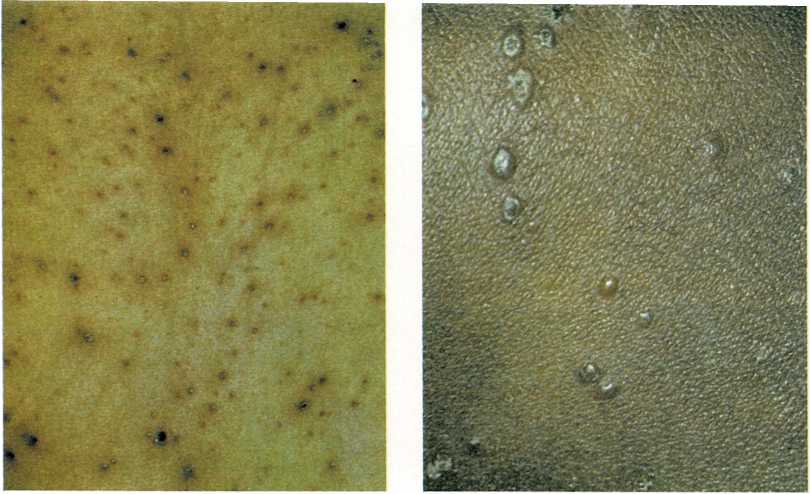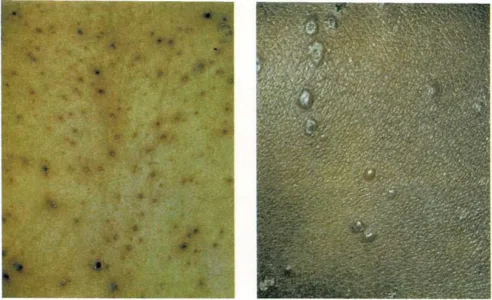Cerebral Palsy – Chicken Pox
Cerebral palsy is a general term referring to a variety of motor
disabilities that result from brain damage. The damage may occur before,
during, or shortly after birth.
Control of muscles and motion is governed by the cerebrum (the largest
and most complex part of the brain) and the cerebellum (a portion of the
brain that is responsible for
coordination). The cerebrum and the cerebellum send signals through the
spinal cord and peripheral nerves to the muscles. When there is damage
in these areas of the brain, the child’s muscles receive badly organized
signals from the brain. Paralysis, weakness, incoordination, lack of
balance, trembling, and involuntary and unorganized movements may occur.
Brain damage sufficient to cause motor disabilities usually is so
extensive that other defects in brain function occur. There may be
seizures, problems with speech, and visual impairment. If damage is
severe, there may be intellectual impairment.
The lack of muscle control that accompanies cerebral palsy often
interferes with language skills. Because of this, it may be difficult to
assess the overall intelligence of a child with cerebral palsy. It is
also difficult to determine whether a child’s performance on an
intelligence test is affected by cerebral palsy or by mental
retardation.
The cerebrum and the cerebellum may be injured in a variety of ways.
Lack of oxygen reaching the infant’s brain, hemorrhage into the brain,
or infection of the mother by German measles or other virus diseases
early in her pregnancy are suspected causes. Usually, cerebral palsy is
not recognized at birth because the cerebrum and the cerebellum of a
newborn have almost no control over crying, sucking, or moving. During
the first year, as the cerebrum and cerebellum develop in the child
without cerebral palsy, .sitting, directed hand movements, standing, and
walking appear. As these fail to develop normally in a child with
cerebral palsy, a doctor can estimate the degree of injury. By that
time, clues about the cause are difficult to find. Detailed information
about pregnancy, delivery, and the early newborn period may provide
enough information for a doctor to speculate as to the cause. But a
definite diagnosis is often impossible.
Although children with cerebral palsy continue to develop and grow, the
acquisition of developmental skills comes later than for normal
children. In some instances these skills never develop.
Cerebral palsy cannot be cured, but medical treatment, physical therapy,
speech therapy, special education, training, and counsel
ing may help increase the skills of afflicted children. The type of help
children with cerebral palsy should receive depends on the type and
degree of disability they have. Medical treatment may include drugs or
surgery. Physical therapy may include braces and exercises. The learning
ability of children with cerebral palsy varies. One may only be able to
accomplish self-feeding and dressing. Another may graduate from college
and enter a profession, [a.g.s., m.s.p.]
Chafing and chapping are two kinds of skin irritations. Chafed skin
is red and often moist. Chafing results when clothing rubs against the
body—at the belt line, for example—or when two skin surfaces rub
together—as in the armpit or groin. Sand, perspiration, or other
irritating substances may make the chafing worse.
To clear up chafing, try to eliminate the cause. If tight clothing is
the cause, dress your child in loose-fitting clothes. If a child is fat,
the child may have to lose weight before the chafing disappears.
Careful cleansing of the skin and application of a soothing cream or
lotion are helpful in treating chafing. If the chafed area is moist,
apply cornstarch or zinc oxide paste or powder two or three times daily
to promote drying. When the child’s skin is drier, discontinue the
cornstarch and use talcum powder. If the chafed area is dry, apply cold
cream three or four times a day. If itching occurs, cut the child’s
fingernails short so that the child will not get hurt by scratching the
area. Apply cool tap water compresses for 20 to 30 minutes, four times a
day. Or give the child tub baths for the same amount of time. If home
treatment does not clear up the chafing, consult your doctor.
Chapping is a reddening, scaling, or cracking of the skin caused by a
loss of oil in the skin. Exposure to cold, wet, windy weather may cause
a child’s cheeks, lips, and hands to chap. Staying indoors when the
weather is bad prevents chapping. But exposure cannot always be avoided.
Mittens and mufflers will help, as will an effort on the child’s part
not to lick the lips. If your child’s skin chaps easily, apply cold
cream to the

In the rash that accompanies chicken pox, new pimples form while old
ones change to blisters. As the blisters dry up, scabs form and then
fall off. Skin color (white, left; black, right) can affect the
appearance of a chicken pox rash.
chapped areas several times daily, especially after washing, to lock in
the moisture. This not only soothes chapped areas, but also helps
prevent chapping.
Harsh soap, failure to rinse thoroughly, and careless drying can also
cause chapping. Have your child use a mild soap or a cleansing lotion or
cream. Encourage the child to rinse and dry thoroughly after washing.
Chapped skin rarely requires medical care. But if chapping is persistent
and severe, consult your doctor, [am m.]
Charley horse is a sudden, involuntary, and often painful
contraction of a muscle or a group of muscles, especially in the leg or
arm. Children often suffer such leg cramps at night, after going to bed.
A charley horse may also be caused by overuse of muscles or by a strain.
The stiffness and soreness caused by a charley horse can be relieved by
bending or straightening the knee or elbow so as to stretch the muscle.
Rubbing liniment on the affected part may also help to relieve some of
the soreness.
Do not confuse a charley horse with a muscle bruise. A muscle bruise is
caused by a blow or strain that crushes and tears the muscle fibers and
causes internal bleeding.
The bruise may turn black and blue, and a hard lump may form. The torn
muscles may bleed internally for several days. Ice packs on the bruised
area will help to relieve the pain and reduce the bleeding. Warm baths
will also help a child gradually regain full use of the muscle.
See also Bruises; Cramps; Growing pains;
Rheumatic fever
Chicken pox (varicella) is an extremely contagious disease. It is
caused by the varicella-zoster virus.
A rash usually appears first on the chest and the back, and then spreads
rapidly over the rest of the body. The rash changes to pimples within a
few hours and then into blisters. The blisters break in one to three
days and dry into scabs. The rash occurs in successive crops—new
pimples form while old ones change to blisters. This condition lasts for
three to four days. The blisters dry up by the fifth to the seventh day.
Most of the scabs fall off by the 10th day, but some may remain up to
the 20th day.
Most children do not become very sick with chicken pox, although some
may have a mild fever. Some children may also vomit, and have backache
and headache. Treating fever with aspirin is not recommended be-
cause this may result in the development of Reye’s syndrome.
Chicken pox occurs most often in children between 2 and 8 years of age,
but it can occur even in the newborn child. Call your doctor if you
suspect your child has chicken pox.
While your child has chicken pox rash, try to keep the child from
scratching. Scratching can open and infect the blisters, causing scars.
Wash the child’s hands at least three times a day and keep the
fingernails short. Baking soda or cornstarch baths once or twice a day
may help relieve the itching. Use one or two cups of soda or starch for
each bath. If the itching is severe, your doctor may be able to
prescribe medication. Call the doctor if any of the blisters become
infected.
Chicken pox appeal’s from 14 to 21 days after exposure. Usually, a child
can go back to school about a week after the disease begins. Chicken pox
is contagious from about one day before the symptoms appear until the
blisters have formed into scabs. A child is immune to it after one
attack.
Children who are immunodeficient because of serious illnesses such as
leukemia, or children receiving cortisone or X-ray treatment, must be
protected from chicken pox as it can produce serious complications.
Recently two antiviral drugs, acyclovir and vidaraline, have been shown
to be effective against varicella-zoster virus; these drugs can be used
to treat certain serious cases of chicken pox. Temporary protection can
be induced by the use of varicella-zoster immune globulin. Preliminary
results with a new live-virus chicken pox vaccine indicate that it is
effective in both healthy and immunodeficient children,
[h.d.k..] Jr.
See also Communicable diseases; Reye’s syndrome; Virus

